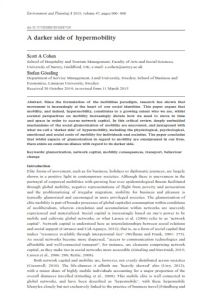Acesse a sua conta getAbstract para obter o resumo!

Acesse a sua conta getAbstract para obter o resumo!
Scott A. Cohen and Stefan Gössling
A Darker Side of Hypermobility
SAGE Publications, 2015
Sobre o que é?
Frequent travel, as glamorous as it may seem, affects people’s personal and social lives.
Recommendation
Today, traveling around the world and recording that experience have become status symbols in many societies. People seeing Instagram or Facebook pictures of people working or vacationing in exotic locations desire a similar lifestyle. Researchers Scott A. Cohen and Stefan Gössling discuss the mechanisms that depict “hypermobility” as glamorous. They offset this alluring portrayal by detailing the negative consequences of frequent travel. While the authors’ critical review of the downside of business travel provides practical insight in this often ignored problem, their writing is fairly academic and a bit repetitive. Nonetheless, getAbstract recommends this new perspective on the topic to business travelers, their bosses and their spouses.
Summary
About the Authors
Scott A. Cohen is a researcher on sustainable mobility and hypermobility at the University of Surrey, Guildford, UK. Stefan Gössling works at Lund University’s department of service management in Sweden.

















Comment on this summary